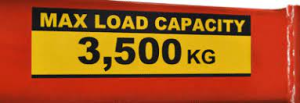Used correctly, hydraulic power packs provide some of the most efficient and cost-effective ways of lifting or applying force where needed, either in an on-site or factory-type environment. Let’s have a look at what constitutes good practice.
Think ahead.
This may seem a somewhat basic tip but it holds true. If you think ahead in the process as to what you are trying to achieve, sometimes problems can be anticipated and prevented. Prepare everything beforehand and try to get a good idea of all the things you may need. Make sure you have the correct machine for the job. Examples with specifications can be seen here: www.hydraproducts.co.uk/. Always check the health and safety implications for those in the vicinity, see here for an example of possible problems that can be easily overlooked:
Preparation and working.
Any surface you plan to lift from, such as the ground, should be prepared in advance, cleared of debris, and checked that it is solid enough to use, if there is standing water, then it should not be used. Ensure that the surface is reasonably flat and when lifting, the process should be handled slowly and checked often.
Never stand or allow anyone else to stand in the direction that the hydraulic power pack is applying the force, however secure you think it is. Nobody should have any part of their body under the load, even briefly. Manufacturers’ guidelines should always be checked and adhered to. They have tested and know what their machines are capable of. Whether a small or large unit, it will have its limits. All machines will come with operating and safety instructions. It can be tempting to skip over these but this is unwise.
Always remember that the manufacturer’s load rating will be the maximum that the hydraulic power pack is capable of. Never lift hydraulic equipment by the hoses, either when in use or idle, and make sure there is no chance that hoses can be driven over or weight applied to them. There should be no kinks or drastic bending of the hoses.







